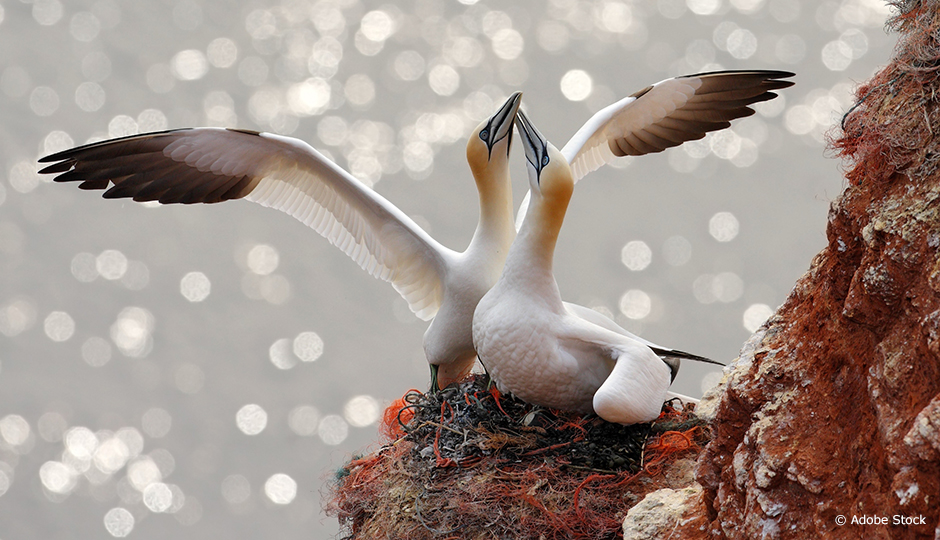Each year, fewer and fewer northern gannet nestlings take flight. Since 2009, the reproductive success of the sea bird species in Gaspésie has varied between 40 and 20%. A sad record was set in 2012, when only 4 of 100 young northern gannets managed to fly out. The situation has ecologists worried since a breeding rate higher than 67% is required to avert species decline. For now, the population that lives in Parc national de l’île-Bonaventure-et-du-Rocher-Percé is hovering around 54 000 couples. But for how long?
In 2012, only 4 of 100 young northern gannets managed to fly out.
David Pelletier, biology professor at Cégep de Rimouski, suspects that a feeding problem may be the reason why so few nestlings survive. In collaboration with Magella Guillemette at UQAR and a team of college and university students, Pelletier analyzed the contents of the birds’ regurgitations: “We noticed that the northern gannets consume a lot less mackerel than they used to.” But if the gannets have a taste for the Gulf of St. Lawrence fish, then why would they stop eating it and turn to less nutritious species such as the sand lance? Pelletier pored over Fisheries and Oceans Canada data and discovered that there is 14 times less mackerel in the Gulf of St. Lawrence today than in the 1970s. “Fishing pressure is to blame, and so is the northward migration of the mackerel, as the species flees the waters in which temperatures have risen due to climate change,” he explains.
A 2012–2017 initiative to track northern gannets using 387 tail-mounted GPS devices confirmed that the birds fly as far as the eastern coast of Newfoundland to feed—a totally unprecedented habit. “These birds usually feed within a 200-kilometre radius around Île Bonaventure,” says Pelletier. “By adding nearly 100 kilometres to their journeys to find food, they are burning a lot of energy and spending less time in their nests, which is detrimental to nestling provisioning.”
David Pelletier is currently looking for behavioural, physiological and haematological markers that may explain why some gannets fare better than others, despite the changes to their diet. He hopes to make the northern gannet a sentinel species of the disturbances in the Gulf of St. Lawrence.




